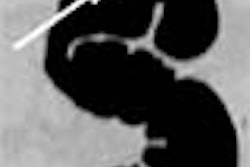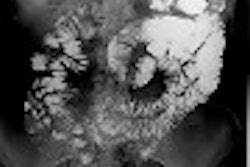The market proliferation of hybrid PET/CT technology has been swift, and now contributes 45% of revenues of the combined U.S. PET and PET/CT market, according to market research and consulting firm Frost & Sullivan.
In fact, PET/CT is beginning to seriously infringe on sales of stand-alone PET systems, as buyers increasingly adopt the higher-end technology, said Monali Patel, industry manager for medical imaging at the San Jose, CA-based firm.
"While some of the merits of PET/CT are not fully understood, the intense buzz surrounding the potential of the technology has boosted acceptance of the scanners at a rapid pace," she said. "The future of PET/CT looks bright, and it is predicted that sales of PET/CT will overtake those of (stand-alone) PET within one to two years." Patel spoke during an industry briefing last week on the U.S. PET and PET/CT markets.
Adoption of PET/CT has been aided by infrastructure set in place in the PET market over the last several years, including a solid FDG distribution network and a relatively stable reimbursement environment, she said. The combined U.S. PET and hybrid PET/CT market generated $481.2 million in revenues in 2002, up 55% from 2001.
Easier customer entry still drives PET sales, however, and technology adoption patterns show that PET is being acquired by varying types of end-users, she said.
FDG distribution sites continue to proliferate. In 1998, there were only 14 FDG-focused radiopharmacies in the U.S. By 2002, the number rose to approximately 62 sites, a figure that doesn't include additional FDG availability through independent radiopharmacies and facilities with in-house cyclotrons, Patel said.
Vigorous competition has also led to a decrease in the average cost of FDG. Another factor spurring adoption of the technology is the growing number of reimbursable PET applications. For example, in 2002 FDG-PET was approved as an adjunct to other imaging modalities for staging and restaging the recurrence of breast cancer metastases, as well as for treatment monitoring of locally advanced tumors when a change in treatment is considered.
PET vendors have also released a number of different scanner models, Patel said.
"This has resulted in a creation of multiple tiers of scanners to suit the needs of varying customer budgets and preferences," she said. "Within each tier of product, prices also continue to fall, thereby making PET an even more viable option for a number of facilities as time goes on."
Such reductions in entry barriers also aid the adoption of PET/CT systems, she said.
Changing adoption patterns
There has been a reduction in the rate of hospital adoption of PET technology relative to the rest of the market, with hospitals hosting 42% of scanners in 2002, compared to 50% in 2000, Patel said. Adoption has moved beyond the early-adopter base of hospitals.
Imaging centers maintained a relatively stable share of the market’s total installed base, with the "others" category the one seeing the most growth. This category encompasses mobile PET providers, government facilities, and unclassifiable institutions, Patel said.
"This shift demonstrates that over time, the opportunities for PET adoption not only lie in the hospital base, but in a number of other facilities as well," she said. "This trend bodes well for the future of the market, and represents ample opportunity for market penetration."
Adopting PET/CT technology is likely to be the dominant trend affecting the PET market today; 2002 saw a flood of PET/CT sales, compared to a trickle in 2001, Patel said. Much of the early success of PET/CT has come at the expense of conventional PET sales, however, which paved the way for the hybrid modality’s success by contributing base infrastructure and market awareness of the technology.
While PET/CT systems are expensive, the competitive healthcare environment will spur a number of facilities to purchase what is viewed as one of the most advanced medical imaging technologies available today, Patel said. PET/CT continues to generate praise from radiologists as well as oncologists, who cite the technology's superiority in detecting various types of cancers and providing information that often results in a change of treatment protocol, she said.
"Interest in molecular imaging and the possibility to some day use this technology in combination with genomics is expected to sustain the momentum of PET/CT for years to come," she said. "As a result, the future of the PET/CT market is expected to remain bright through (2009)."
By Erik L. RidleyAuntMinnie.com staff writer
April 15, 2003
Related Reading
PET/CT boosts confidence in rectal cancer staging, US yields high sensitivity, April 3, 2003
German radiologists assess performance of PET-CT, March 10, 2003
Physician groups navigate a rocky road to PET reimbursement, February 26, 2003
PET useful for staging pediatric bone sarcomas, February 7, 2003
PET/CT preferred as whole-body scan for cancer detection, December 6, 2002
Copyright © 2003 AuntMinnie.com



















